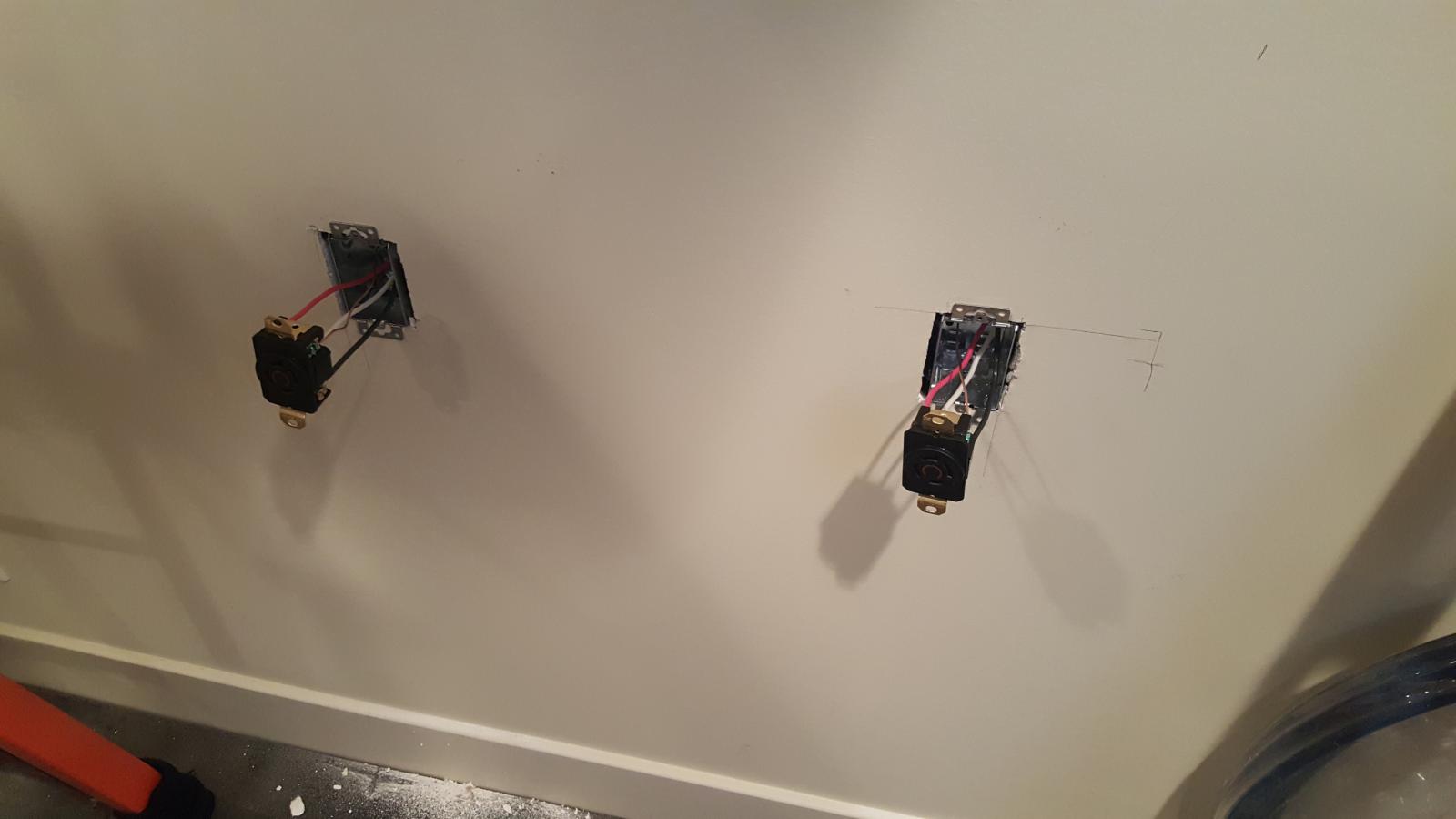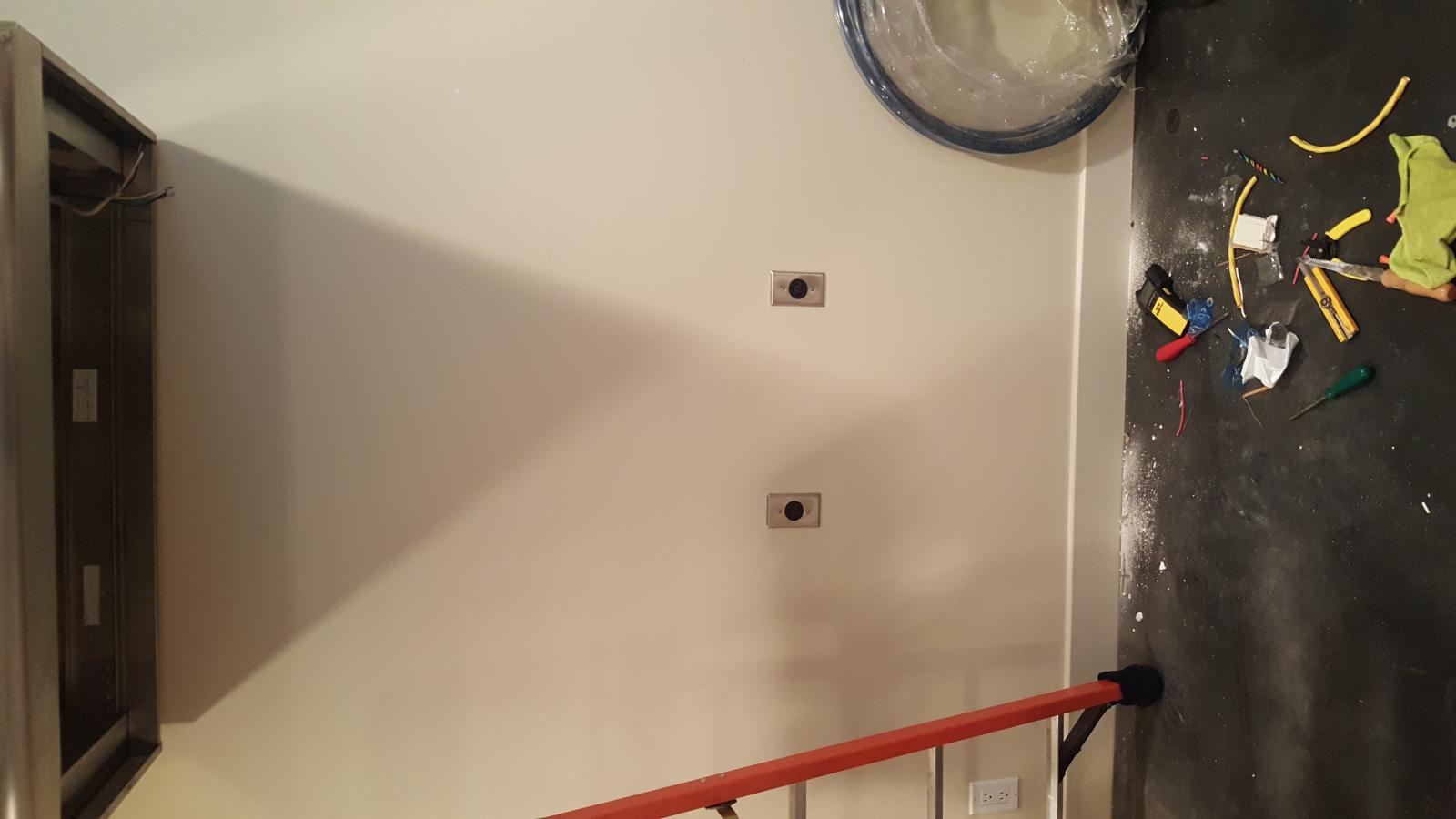I think I understand your your point (and appreciate your concern ) but to play the devils advocate and be honest, (and pardon my ignorance) but isnt the whole point of being able to put 800 amps worth breakers on a 200 amp surface mean that if I was doing something dangerous the breakers would pop on me as well?
I've explained this before but apparently I'm not getting through. If you wish to be compliant with code you will size a panel according to the square footage of your house (for lighting load) and the number and type of appliances and equipment in it. Using the NEC approved load factors you determine the size of the service required. It typically turns out that the ratio of the breaker phase-amperes to the service phase-amperes is around 2 but it doesn't have to be.
The service and the breaker protecting it must be properly sized for safety but home owner inconvenience is also a factor. We don't want, especially in the new code, the home owner to even know what 'load shedding' means and we don't want him to ever have to reset his main breaker so the derating factors are quire conservative. Most of the time you will find your panel running at 20% or less of its capacity. But we also want it to be able to handle the rare peak load.
Why is this important to know, if It doesnt matter anyway since its decided by the breakers ultimately ?
For the reasons given above. If you can't understand those then I think you will just have to understand that there are some things one cannot understand.
(400 amps through a 100 amp service with a defective breaker would start a fire just as 500 amps would right?
No. The fault energy would be 67% greater in the latter case.
others have stated theres no limit to the amount of draw off a service and that the breakers dumb it down for us...
They are, as is so often the case with stuff you pick up off the internet, quite incorrect. There are rules for sizing panels and service equipment based on load and, if one hopes to pass inspection, he must adhere to them.
I think we both know that if I was pulling 90 amps through a pair of 50 amp breaker it would take the moon and stars aligning just right for both to fail and either if not both to pop right?
I don't know what you mean by this. Do you mean two 50 amp breakers in series? If you pull 90 amps through a 50 amp breaker long enough for the breaker's trip I^2t to be exceeded it will pop.
While I do apprecviate the info and want to know this myself I also cant help but laugh since its ok to overload the panel with twice whats safe for it but 2.25 times the amount is somehow not ok? dont you find this silly one size fits all approach that doesnt fit whats safe anyway kind of silly?
I just looked at the DTG on your post and perhaps that explains statements like this. It is not OK to overload the panel at all. If you overload it the breakers will trip. The installed branch breaker phase-amps to service phase-amps ratio is typically 2. If you come up with that ratio your service is probably properly sized. If it is greater than that you are probably undersized and if it is less, over (but the prudent designer would probably accept that up to a point thinking about possible future expansion). But that factor is not a requirement or a design factor. It is a rule of thumb. The rules you must adhere to are in the code.
How would 400 amps of draw on a 100 amp service be realistically any less likely to start a fire than 425 amps on the same 100 amp service? the breakers are either going to work or not work in this scenario.. and if its not about the draw but not intelligently broken down to be about whats running when then how credible of a blind blanket rule is it?
This illustrates complete misunderstanding of what I have been trying to convey in the last several posts and given the structure of the sentence I again attribute to a late Sat night with several bottles of your best. But to answer this same question again in perhaps another way that may drive it home: It isn't a rule. It's a rule of thumb. An engineering guideline. A rough FOM. The rules are in the code.
Im not really too concerned about it since If I had a real concern it would have shown its head in the 4+ years ive been drawing this same load off my panel right?
I don't think anyone has suggested that you should take any action other than to try to get to a fundamental understanding of what's involved here. As you cannot adequately describe what is in you panel there is no way we can compute the ROT number and determine whether your service is undersized or not. And if you haven't had the mains breaker pop then you are, demonstrably OK even if the factor is greater than 2.
All this has shown me is the amp service I have has no responsible correlation to the amount of breakers I put in my box...
There is a 'responsible correlation' so if you were to consider adding a load (breakers),then you should consult an electrician or someone else who understands the concept to advise you.
The intelligent side of me ...
is, for the moment, dormant as he wouldn't make a statement like ...
...the240v breakers I have have no main breakers to shut them off as I see it now
This would imply that these breakers are connected directly to the service prior to the main disconnect. That is, of course, a flagrant code violation and would never have passed inspection so WRT ...
but the whole time I had the important things right.
.. you got this important thing wrong.
I thought and assumed I had a simple panel like the one in your illustration but I dont....
As I suggested in an earlier post perhaps if you post a picture of it someone here can help you understand what you have. No guarantee of course...
the ever changing standards put in place by the folks who often have something to gain financially by it.
Yes, the ever changing standards are put in place by people who gain financially by it and you are one of those people. The code is promulgated by the NFPA with the obvious goal of preventing fires. The NFPA is a consortium of insurance companies, electrical equipment manufacturers and other with a stake in the building industry. If they succeed in preventing fires, and other electrical mishaps, the insurance companies don't have to pay out claims but from the homeowners POV an intact house is much better (financially and otherwise) than a fat check and a pile of ashes.
Technology changes a lot and fast. The first issue of the NEC I ever laid eyes on was a booklet (8 x 5 ?) and perhaps 3/8" thick. In those days outlets were two pronged (no earth). There was no Romex. Etc. The code has to keep up. A good example of this was unearthed here. The 2014 code now requires 20Amps for appliance branches whereas the 2002 edition required 15. A modern home has got lots more electrical stuff in it than ones of even a few years back and the code has to keep up.




 I run both MHx2 and LEDs (blue) in my tank. I like the ripples on the bottom from the MH. But like you I'll probably go all LED some day.
I run both MHx2 and LEDs (blue) in my tank. I like the ripples on the bottom from the MH. But like you I'll probably go all LED some day.








![Craft A Brew - Safale BE-256 Yeast - Fermentis - Belgian Ale Dry Yeast - For Belgian & Strong Ales - Ingredients for Home Brewing - Beer Making Supplies - [3 Pack]](https://m.media-amazon.com/images/I/51bcKEwQmWL._SL500_.jpg)














































![IMG_20170206_105952810[1].jpg IMG_20170206_105952810[1].jpg](https://cdn.homebrewtalk.com/data/attach/332/332156-IMG-20170206-105952810-1-.jpg)
